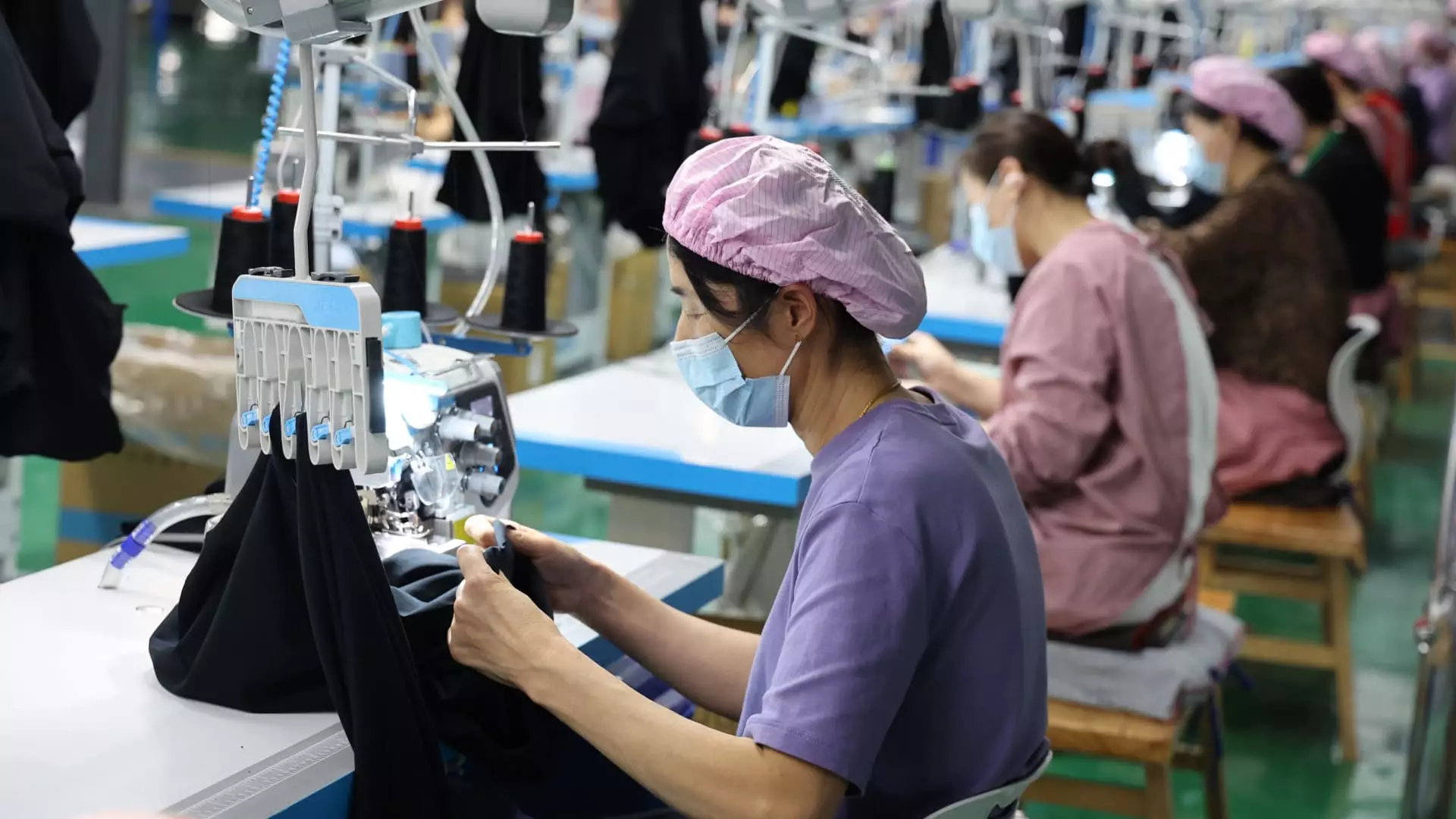As the trade landscape evolves, Chinese manufacturers are experiencing significant disruptions due to escalating U.S. tariffs. With production cuts and factory shutdowns becoming more common, companies are reassessing their strategies to remain competitive. Analysts report that a wave of layoffs is looming over manufacturing hubs like Yiwu and Dongguan, regions that have traditionally relied on exports to fuel their economies. Cameron Johnson, a senior partner at Tidalwave Solutions, highlights that some factories have already reduced their workforce and halted production, particularly in sectors like toy and sporting goods manufacturing. This development raises concerns about the long-term viability of these industries if the tariffs persist.
The situation isn’t just a hiccup; millions of workers are uniquely positioned at risk. Recent estimates suggest that between 10 to 20 million Chinese employees are engaged in businesses that export directly to the U.S. With just over 470 million workers employed in China’s urban areas last year, it’s evident that the impact of these tariffs extends far beyond the factory floors, threatening livelihoods and destabilizing entire communities. This unsettling atmosphere begs the question: what steps can manufacturers take to pivot effectively in the face of such adversity?
Searching for New Markets and Creative Solutions
In response to mounting pressures, many Chinese manufacturers are diversifying their clientele and exploring alternative markets. The uncertainty surrounding tariffs has prompted companies to take significant steps toward innovation. For instance, the athleticwear manufacturer Woodswool has embraced e-commerce channels by leveraging livestreaming, a strategy gaining momentum in China. This pivot not only allows them to retain some sales but also showcases the company’s flexibility in adapting to new consumer behaviors. The shift towards online sales was particularly striking, as even though U.S. orders were canceled, domestic sales saw initial success. This shift reflects an agile response to changing market conditions, illustrating the importance of innovation in maintaining resilience.
Encouragingly, the Chinese government has stepped in to facilitate this transition by promoting domestic consumption and encouraging the use of local platforms like Baidu for e-commerce. Such support offers manufacturers a lifeline, assisting them in redistributing their goods within the domestic market. The introduction of “virtual humans” to enhance sales interactions is a particularly noteworthy example of how technology can be harnessed in marketing efforts, allowing manufacturers to reduce overhead costs and streamline operations. However, the success of these strategies remains contingent on the ability to capture and retain consumer interest in a rapidly evolving marketplace.
Industry Insights Amidst Feared Economic Fallout
As trade tensions persist, industry experts are keenly aware of the potential ramifications for small businesses. According to Ash Monga, the founder of Imex Sourcing Services, many small enterprises are at a breaking point, struggling to cope with sudden tariff increases. Some may even face closure if unable to adapt quickly enough. Recognizing this vulnerability, Monga has initiated the launch of a “Tariff Help” website designed to connect small businesses with suppliers located outside of China, a definitive measure aimed at mitigating the financial burden imposed by trade restrictions.
It’s evident that some manufacturers are already rethinking their sourcing strategies, looking to countries like India and Southeast Asia as potential new production hubs. This diversification reflects a proactive approach, one that many companies are adopting as they seek to insulate themselves from the volatility of U.S.-China trade relations. Meanwhile, companies like Liu Xu’s Beijing Mingyuchu are finding success in tapping into markets in Brazil, marking a shift towards trade routes that might be less susceptible to American scrutiny.
The Road Ahead: Adjusting to Increased Competition
As the trade landscape becomes more precarious, competition among Chinese businesses is expected to intensify. Michael Hart, president of the American Chamber of Commerce in China, notes that many enterprises are grappling with feasibility under the current tariff regime. This scenario is driving some manufacturers to innovate while seeking alternative supply chains and customer bases. With the global market undergoing shifts, those who can adapt swiftly will likely emerge stronger.
The push for localization in product development cannot be ignored. Products originally crafted for the U.S. suburban market might not resonate with Chinese consumers living in urban apartments. Companies are beginning to recognize that understanding local consumer behaviors and preferences is crucial for survival. And as fatigue with certain marketing tactics emerges, especially among digital-savvy consumers, manufacturers must continually evolve their strategies to capture attention in a crowded market.
The challenges posed by U.S. tariffs usher a new era for Chinese manufacturers, one in which resilience, adaptability, and innovation are paramount. The unfolding narrative is compelling, heralding an age where survival hinges on businesses’ ability to pivot and explore new opportunities amid turbulent waters.

